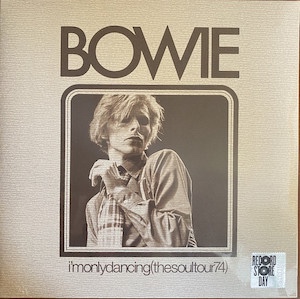TRIM; White Noise and Minimal Sound
By Henry Klein
Did you know that the human brain is specifically designed to be prone to distraction? As part of our most ancient survival instincts, sudden changes in our sonic environments will immediately disrupt the flow of information in our brains. The instantaneous reactions to these sounds that we experience function as vital defence mechanisms against physical threats or hazards. But more often than not – especially in our modern era of reduced danger – these sudden disruptions end up being physically inconsequential and become mere distractions. If you hear a loud noise while working on your laptop in a cafe and instinctively look towards the source, all you will likely see is a broken glass or a piece of tableware on the floor. Trivial instances such as these can completely derail our trains of thought and frustrate us to no end, especially when we are trying to think deeply or focus on tasks.
Perhaps this is the reason why white noise is heralded by many as a versatile tool for concentration enhancement, creative stimulation, and sleep therapy. For those who don’t know, white noise is the result of a dense combination of random frequencies from all across the sonic spectrum, reminiscent of the static sometimes emanated by radios or old TVs. However, white noise can often sound more like ocean waves on a sandy beach, especially at soft volumes. In theory, this concentrated pool of varying frequencies – even when listened to quietly – functions to obfuscate any competing sounds which may be present in a person’s environment, thereby eliminating the threat of distraction.
 Visual Representation of White Noise
Visual Representation of White Noise
Advocates of white noise claim that the sound induces a meditative and absorbed state of mind that is conducive to a variety of creative and focus-driven activities. To these advocates, the repetitive, minimalistic, and full-bodied aspects of white noise function to trim out the non-essential distractions present in everyday life.
For many others, however, white noise is not a particularly soothing or cathartic sound. The idea of listening to TV static as a means to concentrate is obviously not something that appeals to everyone, especially for music-savvy individuals who rely on creative models of sound for motivation. Unfortunately, many types of music are not conducive to focus or creativity and can function as distractions themselves. But fear not! All of us have access to a diverse range of musical varieties which – through their minimalistic textures, rhythms, and patterns – can easily instill a sense of focus and tranquility similar to what many achieve through white noise. If you are a music lover and enjoy listening to different styles, then hopefully some of these varieties will help you trim the unnecessary interruptions out of your life.
Much of the music which relates to white noise can be classified as “minimalistic” or “hypnotic”. In classical music, the term “minimalism” was first introduced in the early 1960’s as a way to classify a group of like-minded experimental composers within the avant-garde New York “downtown scene”. These minimalist composers, who were originally referred to as the “New York Hypnotic School”, trimmed away previously-established traditions of classical and popular music such as songful melodies, catchy choruses, and narrative structure. Their works – characterised by consistent rhythmic pulses, simple consonant harmonies, and slow-paced sonic transformations – sought to offer listeners with an original and newfound musical language. Many of these pieces were originally considered far too radical and strange for the general public, but as the movement progressed minimalism became far more approachable and pleasant to listen to.
Among the most well-known of these minimalist composers is Steve Reich, whose work is known for favoring the use of subtle developmental processes to immerse his listeners. Through meticulous layering and gradual evolution of rhythm and texture, Reich’s compositions invent their own narrative structures and utilise far fewer elements than most other classical compositions. Although his early works are highly experimental and are difficult to understand for casual listeners, his later works successfully brought minimalism into a widely accessible context.

In one of his most famous and well-received pieces, 1976’s Music For 18 Musicians, he manages to create nearly an hour of engaging music using a very limited assortment of compositional techniques. Divided into eleven sections corresponding to eleven different chords, the music develops slowly but utilises its consistent rhythmic pulse, heavily layered instrumentation, and ever-transforming harmonic landscape to ensure that listeners remain fascinated and mesmerised by the piece. With these distinctive qualities, Music for 18 Musicians can easily lift you into a white noise mindset where external distractions and interruptions are neutralised.
Interestingly enough, Reich has been quite vocal about how his inspiration traces back to a passion for jazz music, particularly the trimmed-down “modal jazz” style formulated by the likes of Miles Davis, John Coltrane, Cannonball Adderley, Bill Evans, and several others in the late 1950’s. In looking at Davis’ landmark 1959 album Kind of Blue – featuring Coltrane, Adderley, and Evans all at once – it is easy to visualise how Reich may have been affected by the music.
Modal jazz – as opposed to earlier forms of jazz such as swing and bebop – made use of more open-ended and slowly-evolving harmonies, providing much more space for improvisation than had ever been allocated before. On Kind of Blue, Davis’ ensemble trims away the blistering tempos and rapid chord changes of bebop in exchange for minimalism, offering an enormity of new creative possibilities for each soloist. By implementing this innovative structure into the music, Davis provides himself and his performers with space to bring something completely original and individual to each song.

The album’s opener,”So What”, is a perfect example of how Davis’ ideas completely remodelled the sound of jazz as it was understood in 1959. Containing only two closely-related chords and one simple melodic line, the song seamlessly captures an ambient atmosphere that is a far cry from conventional bebop and swing. Individual solos by Davis on trumpet, Coltrane on tenor saxophone, Adderley on alto, and Evans on piano become the song’s primary focus, while Paul Chambers’ bass lines Jimmy Cobb’s drum beats provide hypnotic and pulsating backdrops to the solos. Each individual solo lifts the piece into new territory, yet the transformations are so subtle that the listener remains almost unaware of their presence. The track title “So What” embodies its overall attitude, subverting and eliminating standard jazz conventions in order to create something even more spellbinding than jazz in its usual forms. As a complete album, Kind of Blue will effortlessly draw you into its sound without demanding too much of your attention, making it an absolutely ideal white noise substitute.
As the rest of the twentieth century unfolded, numerous other styles of music drew influence from minimalism and assimilated its aesthetic traits into genre-specific frameworks. Among the most recent of these innovations is the creation of “minimal techno”, popularised by Detroit-based electronic producer Robert Hood in the early 1990’s.
Prior to Hood’s innovations, Detroit techno music was known for being forceful, intense, and often sonically head-splitting. Many prime examples of this sound can be found in the catalogue of Detroit’s famous Underground Resistance collective, which Hood performed and recorded in with Jeff Mills and Mike Banks from 1989 to 1992. After Hood left the group, he felt the need to develop his own singular style and contribute something entirely new to the techno scene. After conducting numerous experiments in the studio over the course of several years, he began to formulate a style of techno that was entirely his own and had never been produced by anyone else.

By using a very modest palette of sounds, repeated rhythmic patterns, and sparse harmonies and melodies, Hood’s minimalism boldly strips away the aggressive qualities of other techno styles and capitalises on the genre’s otherworldly and machine-like elements. As he explained in a 2014 interview with Red Bull Music Academy, “My whole idea with minimalism was to create rhythms inside of rhythms… hidden rhythms… my idea was to not just create diminutive art, or simple art.” Bearing a strong likeness to the outputs of Davis and Reich before him, Hood has created music that is stark and repetitive yet simultaneously dense, expansive, and trance-inducing. For electronic music fans and clubgoers, Hood’s music is an ideal listening tool for concentration and creative stimulation.
Among the most recognised and universally-praised tracks of his career is “Never Grow Old”, released under his alias Floorplan in 2014. Released after two decades of continued stylistic growth, this track produces astonishing results by combining the minimal techno style with motown soul and uplifting house music. “Never Grow Old” opens much like a standard minimal techno track, repeating stripped-back percussive sounds and a softly unimposing rhythmic harmony. As the song progresses, Hood incorporates an Aretha Franklin sample from her song “We Never Grow Old”, carefully trimming and manipulating fragments of her original vocal track to interweave with his song’s pulse and harmonic atmosphere. Hood’s track is incredibly energetic and has been well-worn by club DJs worldwide since its release, but it effectively retains his unmistakable thumbprint of immersive and hypnotic minimalism.
Although white noise may be the most theoretically accurate listening method for trimming out external distractions, music’s ability to create similar benefits should not be underestimated or taken for granted. Whether you are partial to classical, jazz, or electronic music, there are a wealth of listening options which – through their extremely creative approaches – will disconnect you from your surroundings and reduce the limitations of your attention span.
You can read more about the benefits of white noise here.
OR listen to the discussed musical works here:
Steve Reich, Music for 18 Musicians





